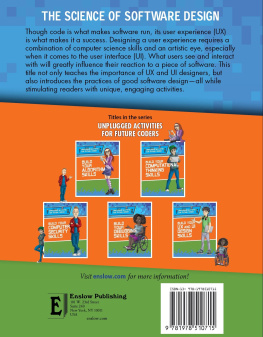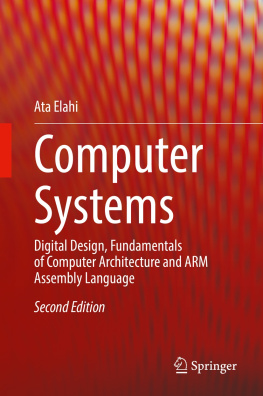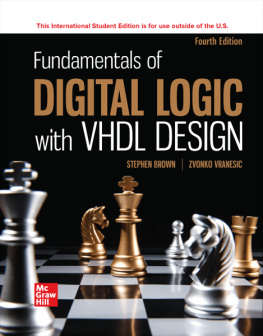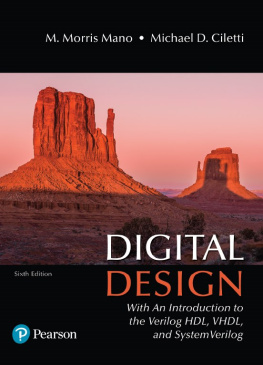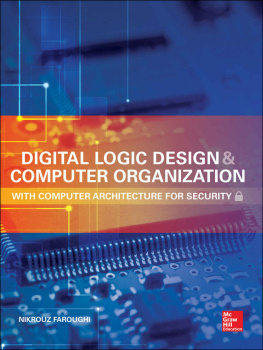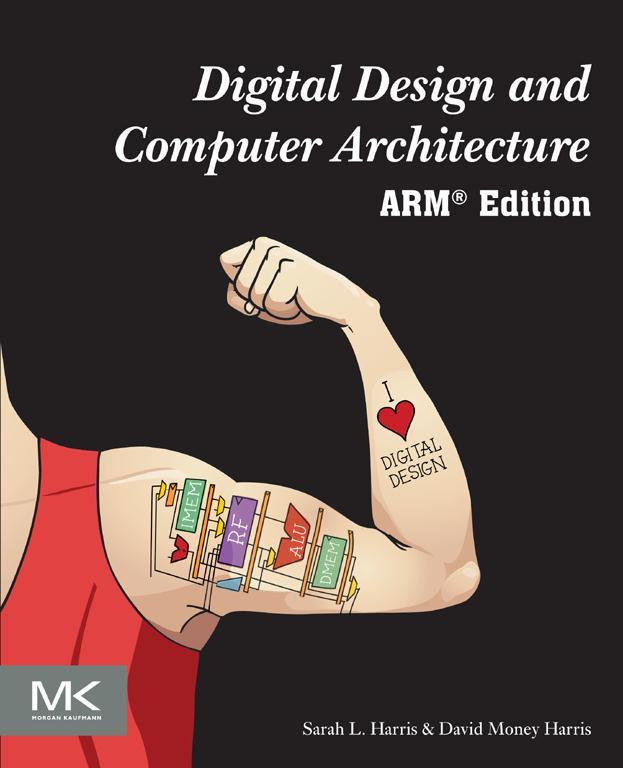Table of Contents
List of tables
- Tables in 1
- Tables in 2
- Tables in 3
- Tables in 4
- Tables in 5
- Tables in 6
- Tables in 7
- Tables in 8
- Tables in e9
- Tables in eA
- Tables in B
- Tables in eC
List of illustrations
- Figures in 1
- Figures in 2
- Figures in 3
- Figures in 4
- Figures in 5
- Figures in 6
- Figures in 7
- Figures in 8
- Figures in e9
- Figures in eA
- Figures in B
- Figures in eC
Landmarks
Table of Contents
Digital Design and Computer Architecture
ARM Edition
Sarah L. Harris
David Money Harris

In Praise of Digital Design and Computer Architecture
ARM Edition
Harris and Harris have done a remarkable and commendable job in creating a true textbook which clearly shows their love and passion for teaching and educating. The students who read this book will be thankful to Harris and Harris for many years after graduation. The writing style, the clearness, the detailed diagrams, the flow of information, the gradual increase in the complexity of the subjects, the great examples throughout the chapters, the exercises at the end of the chapters, the concise yet clear explanations, the useful real-world examples, the coverage of all aspects of each topicall of these things are done very well. If you are a student using this book for your course get ready to have fun, be impressed, and learn a great deal as well!
Mehdi Hatamian, Sr. Vice President, Broadcom
Harris and Harris have done an excellent job creating this ARM version of their popular book, Digital Design and Computer Architecture. Retargeting to ARM is a challenging task, but the authors have done it successfully while maintaining their clear and thorough presentation style, as well as their outstanding documentation quality. I believe this new edition will be very much welcomed by both students and professionals.
Donald Hung, San Jose State University
Of all the textbooks Ive reviewed and assigned in my 10 years as a professor, Digital Design and Computer Architecture is one of only two that is unquestionably worth buying. (The other is Computer Organization and Design.) The writing is clear and concise; the diagrams are easy to understand; and the CPU the authors use as a running example is complex enough to be realistic, yet simple enough to be thoroughly understood by my students.
Zachary Kurmas, Grand Valley State University
Digital Design and Computer Architecture brings a fresh perspective to an old discipline. Many textbooks tend to resemble overgrown shrubs, but Harris and Harris have managed to prune away the deadwood while preserving the fundamentals and presenting them in a contemporary context. In doing so, they offer a text that will benefit students interested in designing solutions for tomorrows challenges.
Jim Frenzel, University of Idaho
Harris and Harris have a pleasant and informative writing style. Their treatment of the material is at a good level for introducing students to computer engineering with plenty of helpful diagrams. Combinational circuits, microarchitecture, and memory systems are handled particularly well.
James Pinter-Lucke, Claremont McKenna College
Harris and Harris have written a book that is very clear and easy to understand. The exercises are well-designed and the real-world examples are a nice touch. The lengthy and confusing explanations often found in similar textbooks are not seen here. Its obvious that the authors have devoted a great deal of time and effort to create an accessible text. I strongly recommend Digital Design and Computer Architecture.
Peiyi Zhao, Chapman University
Copyright
Acquiring Editor: Steve Merken
Development Editor: Nate McFadden
Project Manager: Punithavathy Govindaradjane
Designer: Vicky Pearson
Morgan Kaufmann is an imprint of Elsevier
225 Wyman Street, Waltham, MA 02451, USA
Copyright 2016 Elsevier Inc. All rights reserved.
No part of this publication may be reproduced or transmitted in any form or by any means, electronic or mechanical, including photocopying, recording, or any information storage and retrieval system, without permission in writing from the publisher. Details on how to seek permission, further information about the Publishers permissions policies and our arrangements with organizations such as the Copyright Clearance Center and the Copyright Licensing Agency, can be found at our website: www.elsevier.com/permissions.
This book and the individual contributions contained in it are protected under copyright by the Publisher (other than as may be noted herein).
Notices
Knowledge and best practice in this field are constantly changing. As new research and experience broaden our understanding, changes in research methods, professional practices, or medical treatment may become necessary.
Practitioners and researchers must always rely on their own experience and knowledge in evaluating and using any information, methods, compounds, or experiments described herein. In using such information or methods they should be mindful of their own safety and the safety of others, including parties for whom they have a professional responsibility.
To the fullest extent of the law, neither the Publisher nor the authors, contributors, or editors, assume any liability for any injury and/or damage to persons or property as a matter of products liability, negligence or otherwise, or from any use or operation of any methods, products, instructions, or ideas contained in the material herein.
All material relating to ARM technology has been reproduced with permission from ARM Limited, and should only be used for education purposes. All ARM -based models shown or referred to in the text must not be used, reproduced or distributed for commercial purposes, and in no event shall purchasing this textbook be construed as granting you or any third party, expressly or by implication, estoppel or otherwise, a license to use any other ARM technology or know how. Materials provided by ARM are copyright ARM Limited (or its affiliates).
ISBN: 978-0-12-800056-4
British Library Cataloguing-in-Publication Data
A catalogue record for this book is available from the British Library
Library of Congress Cataloging-in-Publication Data
A catalog record for this book is available from the Library of Congress
For Information on all Morgan Kaufmann publications, visit our website at www.mkp.com
Printed and bound in the United States of America

Dedication
To our families
Preface
This book is unique in its treatment in that it presents digital logic design from the perspective of computer architecture, starting at the beginning with 1s and 0s, and leading through the design of a microprocessor.
We believe that building a microprocessor is a special rite of passage for engineering and computer science students. The inner workings of a processor seem almost magical to the uninitiated, yet prove to be straightforward when carefully explained. Digital design in itself is a powerful and exciting subject. Assembly language programming unveils the inner language spoken by the processor. Microarchitecture is the link that brings it all together.



